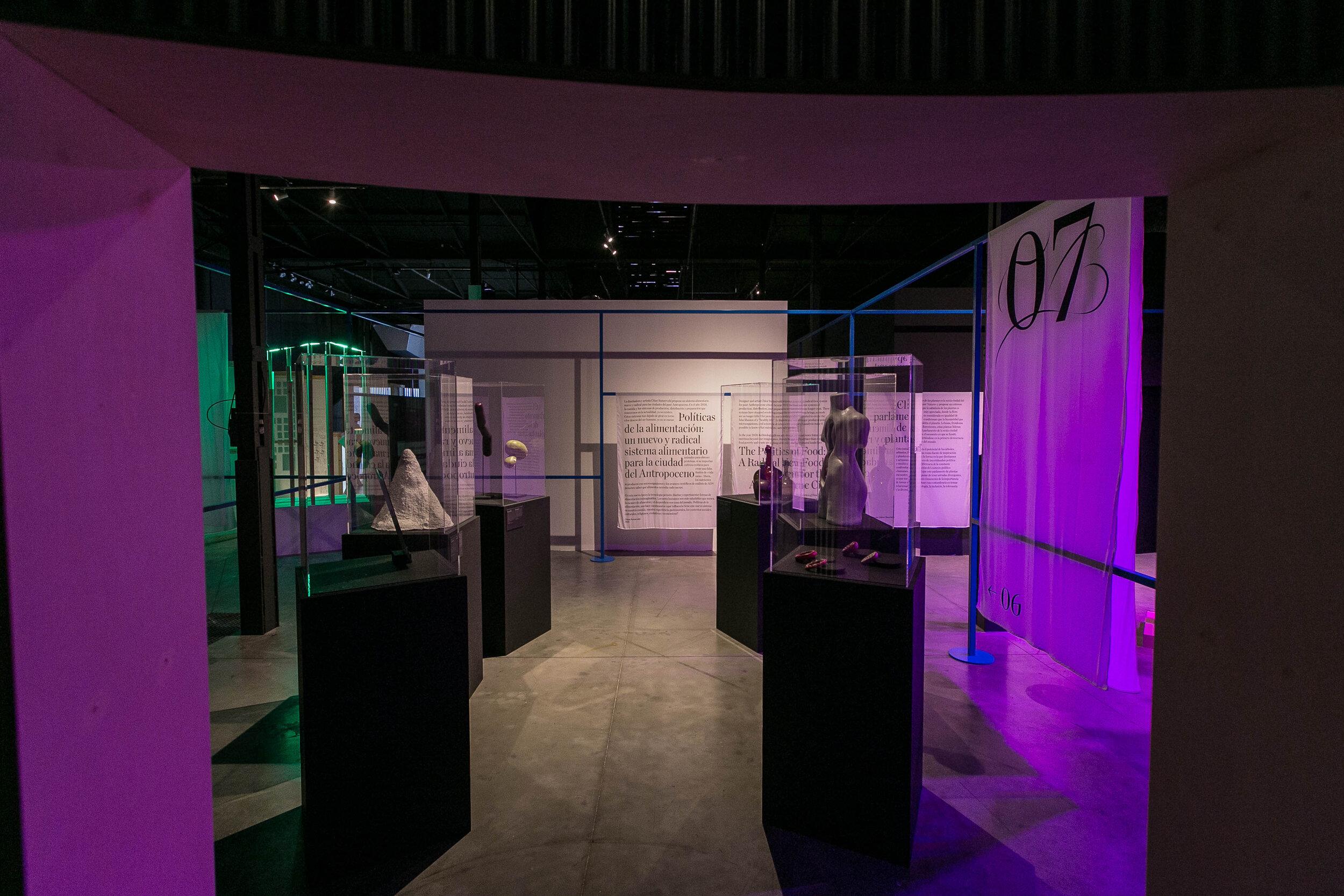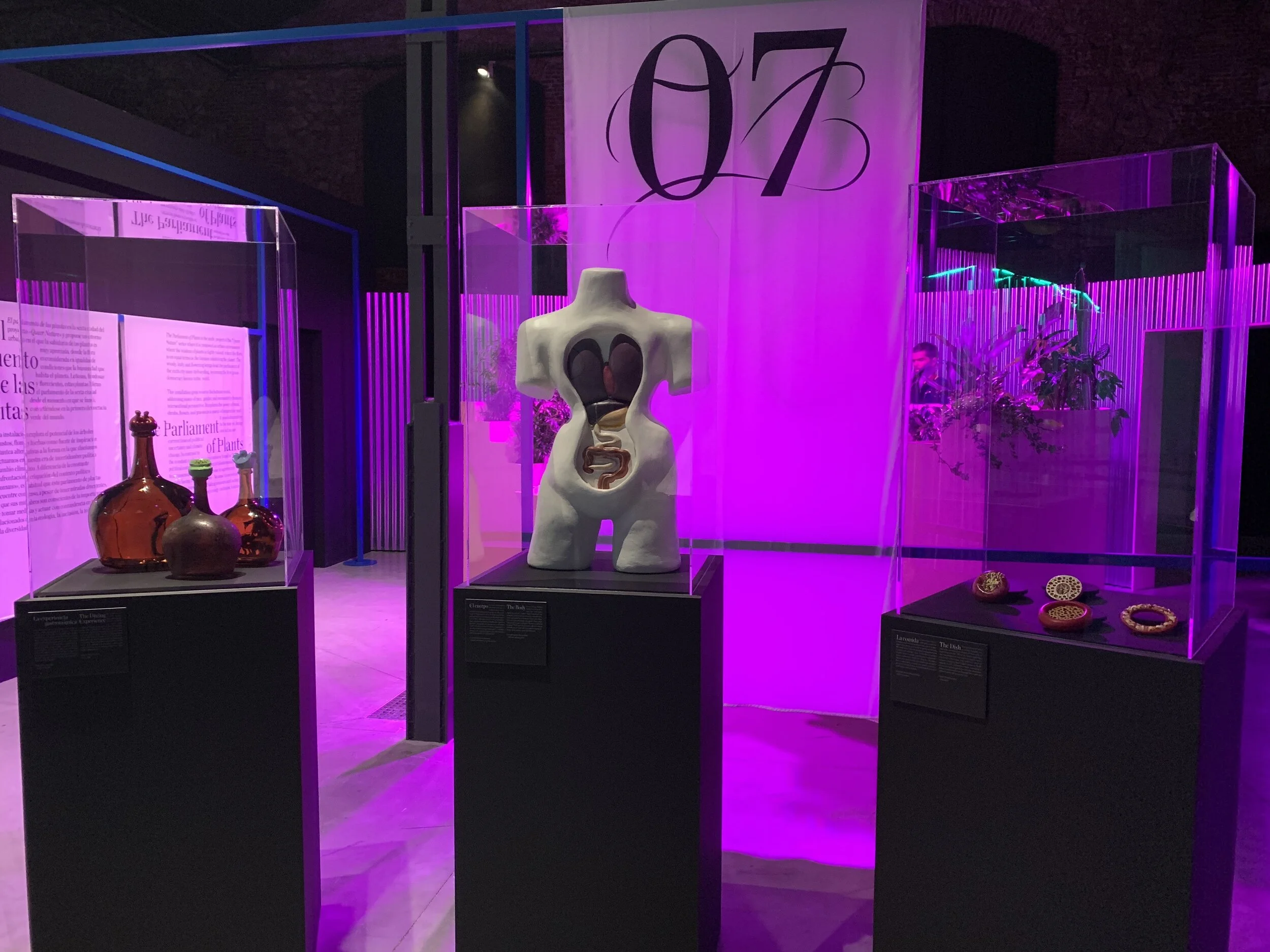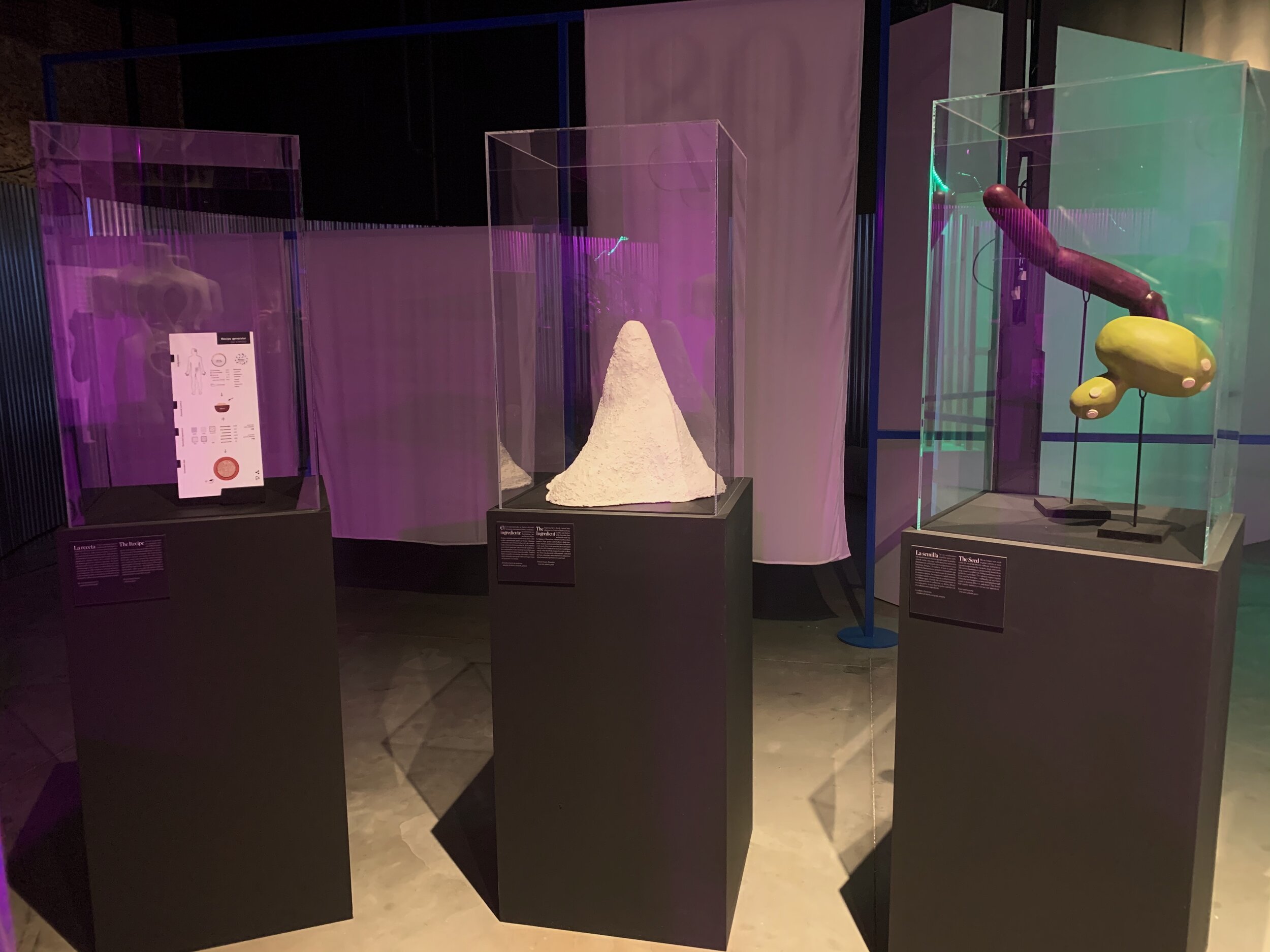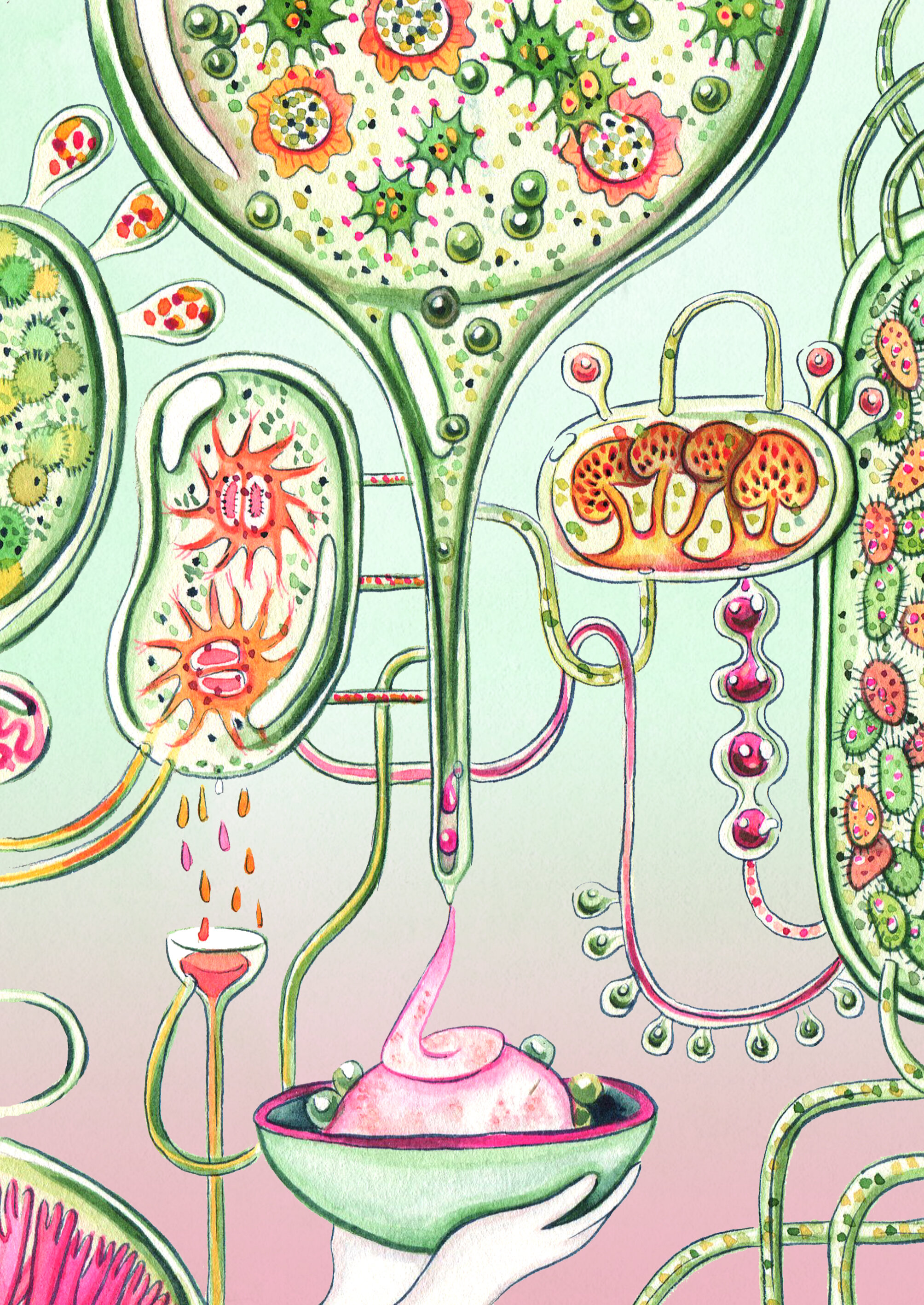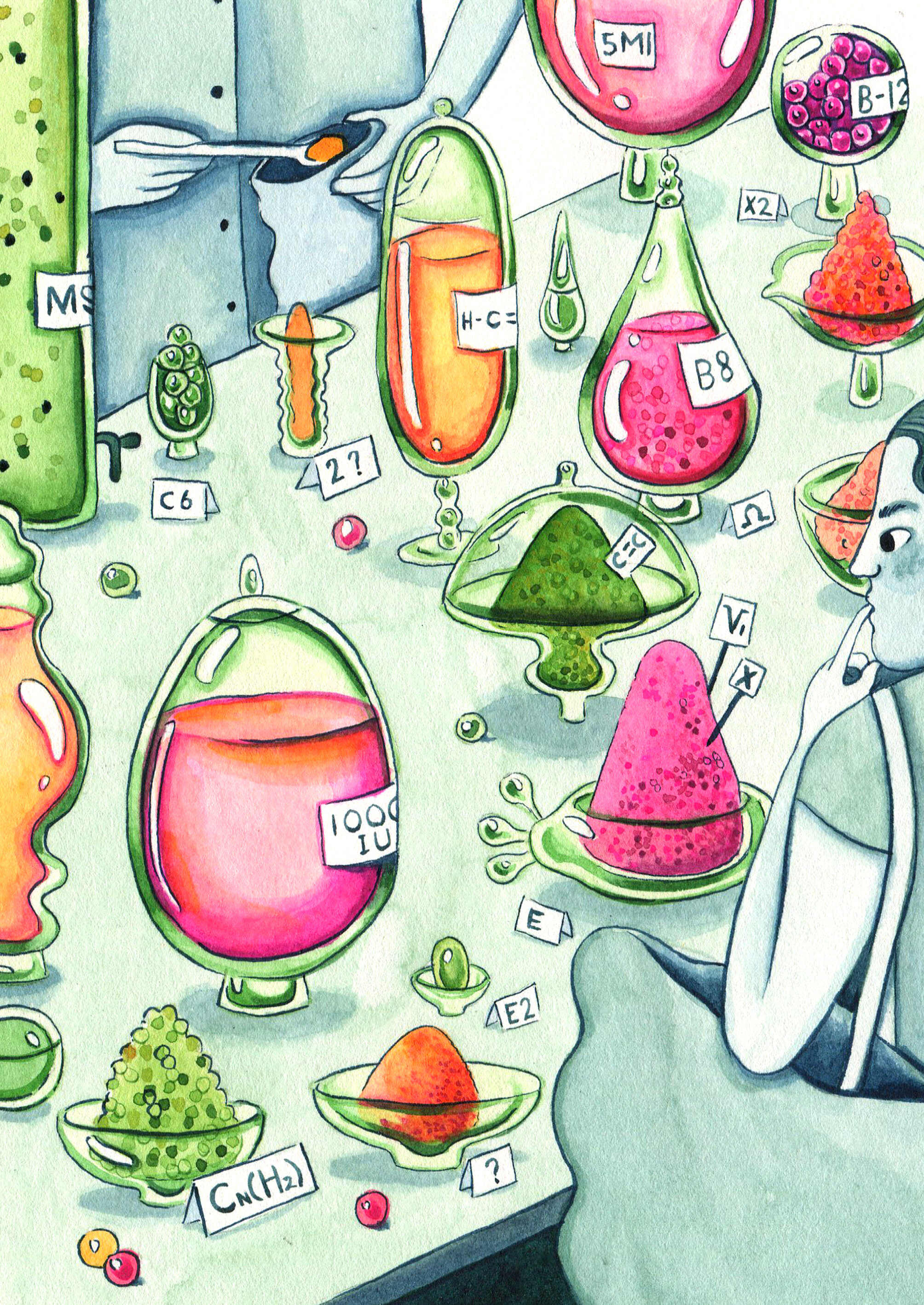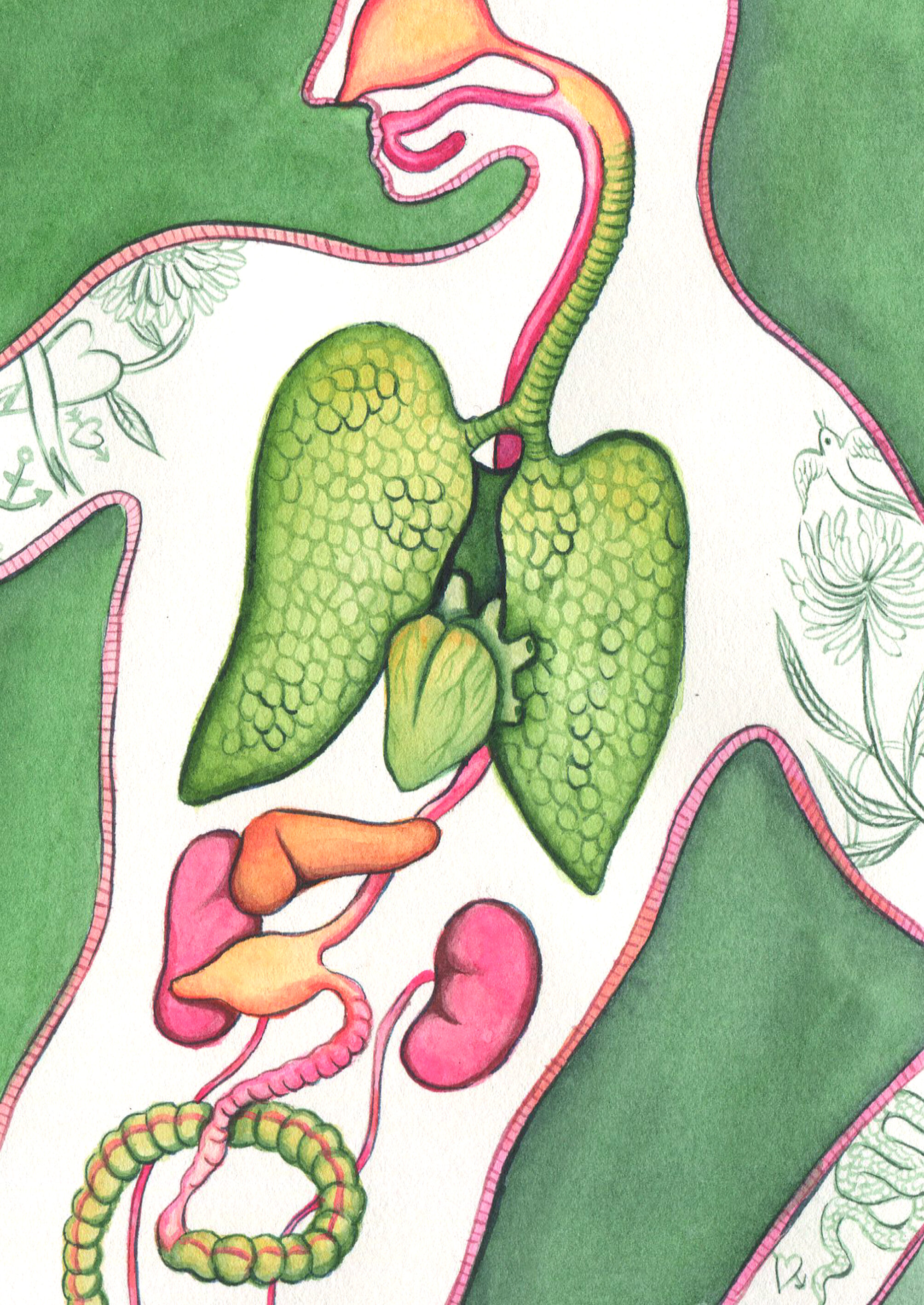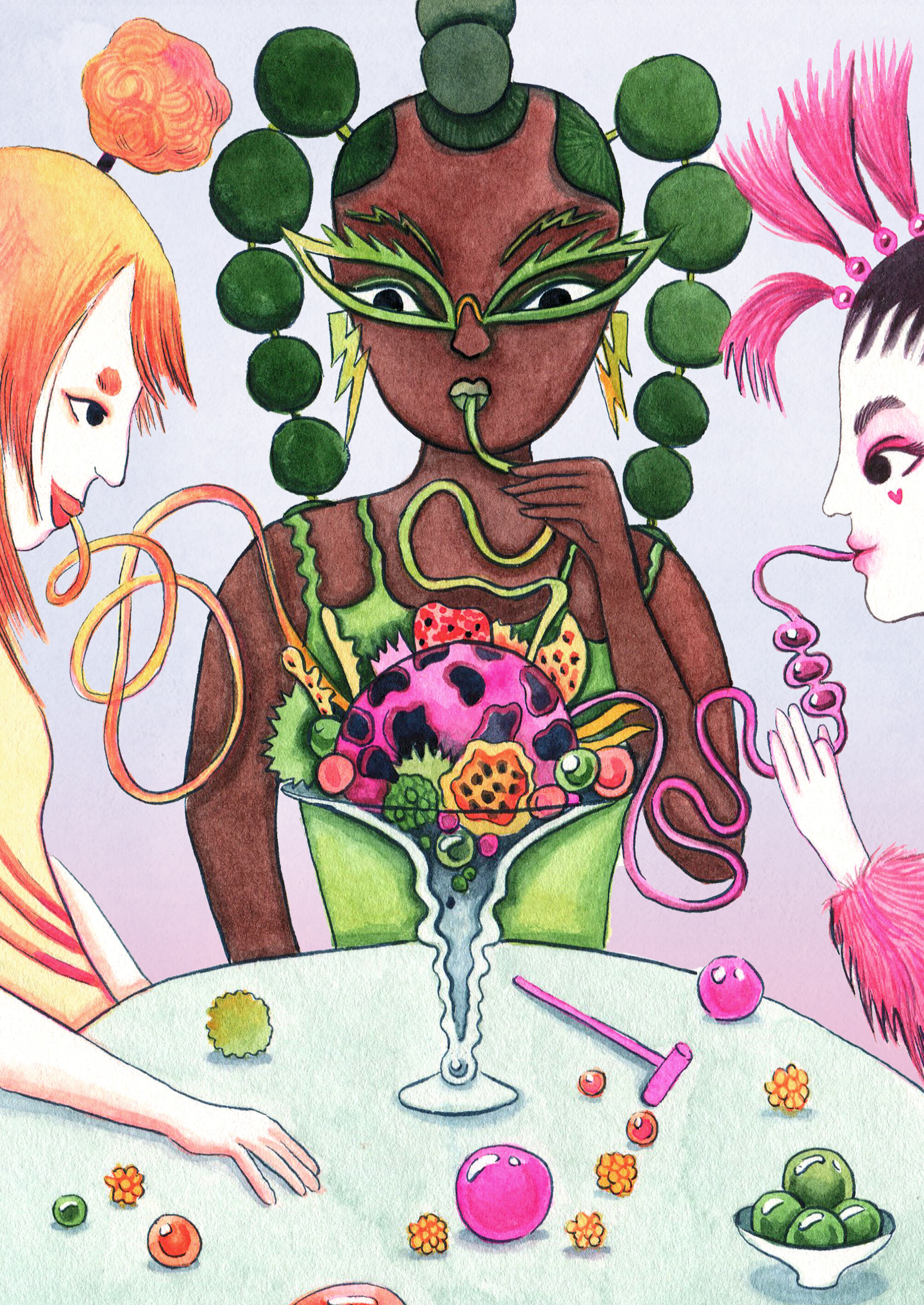Politics of Food
A Radical New Food System for the Post-Anthropocene City
Year of project: 2020
Commissioned by: Ethel Baraona for Matadero Madrid
Part of exhibition ‘Twelve Urban Fables’ | 13 Feb 2020 - Jan 1, 2021
Politics of Food
A Radical New Food System for the Post-Anthropocene City
Imagine, it's 2050 and food as we know it today no longer exists. For sustainability reasons, we saw no other option left but to embrace a radically new food system better suited to the post-Anthropocene city. While it used to be normal to kill animals for protein and import exotic crops from the other side of the world, life no longer revolves around human desires.
Today, all nutrients are produced by microbes: bacteria, fungi, yeasts and micro-algae that directly produce carbohydrates, proteins, fats, vitamins, fibers and flavors with minimal need for natural resources or space. Thanks to DNA analysis and real-time data generation, everyone knows exactly what to eat to best nourish the body. The rise of powder-based nutrition caused a disconnect between feeding the body as efficiently as possible and the sensory pleasure and social joy of eating. Technology allows us to design and experience foods beyond our imagination. People are healthier than ever; food shortages and waste are problems of the past; and farmlands have been restored to their original ecosystems.
Politics of Food shows six artifacts from a possible future food system based on edible microbial biomass. How will a radically new food system affect our food, eating experience, social behavior, culture, religion, physical evolution and economic situation?
1. The Seed
We no longer sow seeds to grow vegetables or raise livestock for meat, instead we directly grow nutrients using micro-organisms such as bacteria, fungi and yeasts. The microbes are grown in bioreactors; large vessels in which the living conditions can be perfectly controlled. Microbes do not require regular food, take up much less space and use minimal amounts of water. When the microbes have sufficiently reproduced, a portion is drained, filtered and dried. This leaves a high-quality food powder as an ingredient.
2. The Ingredient
Supermarkets slowly turned into pharmacies. Crates of fruits and vegetables and shelves with chocolate bars and breads made place for big jars with flavorless, colorless and scentless powders; high-quality carbohydrates, lipids, proteins, vitamins and minerals which form the basis of each meal. Every store provides their customers with free DNA analysis, so everyone knows exactly what their bodies need in order to flourish. Additionally, there is an aisle with naturally cultivated aromas, colorings and texturizers to add a personalized sensorial experience to your food.
3. The Recipe
Each household is equipped with an AI system that generates unique recipes for every meal. The basis of each recipe is your personal blend of nutritional powder. By entering your preferences on how you want your dish to look, feel, taste, smell and sound, the system generates options. You can tweak the selected dish by adjusting the 3D image on the screen. When you are satisfied with the final recipe, the digital file is sent to a food printer. After you supply the printer with the nutritional powder and additional flavors, aromas, colorings and texturizers, your dish is created.
4. The Dish
Eating has never been so exciting. Imagine that you can create anything you dream of from a pile of nutritional powder. While the nutritional value and composition of your dish will stay the same, you decide if you want your dish to be sweet or savory, round or edged, dense or fluffy, crunchy or soft, colorful or white, an explosion of a mouth-coating greasiness or juicy freshness. Science and precision-technology can enable our wildest sensory dreams to come true.
5. The Body
How will our bodies evolve over time if we continue the consumption of highly functional powder-based nutrition? We probably don’t need such a big stomach anymore and can make do with much smaller intestines. Will our appendix have finally disappeared? What might happen to our jaws and teeth? Would we still need to poop? Does a new food system affect our brain and behavior? Will we have eradicated obesity, diabetes, heart disease and malnutrition?
6. The Dining Experience
With the rise of novelty foods, new eating tools, rituals and habits are coming into existence. Think about sensory dice for random recipe-development (in case you want to spice things up). An expansion pack for your AI system that creates color-coded interactive sharing dishes (so you still know what parts to eat but instead now from a combined dish that needs to be unraveled with friends). Alongside tableware to stop spherical foods from rolling off the table or special mouthpieces to trigger your lips and tongue that increase the sensory experience while drinking liquid foods.
Illustrations by Enzo Pérès-Labourdette
Commissioned by the Dutch embassy in Berlin to illustrate the Politics of Food project
for the publication ‘Recipes for the Future’
